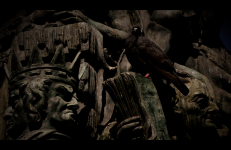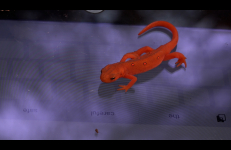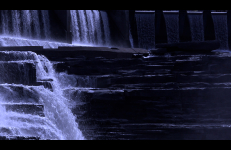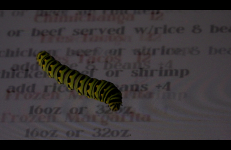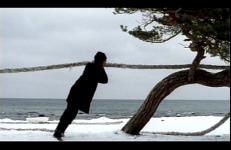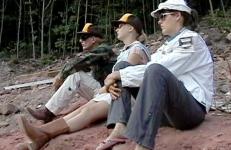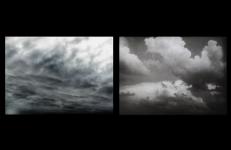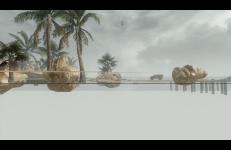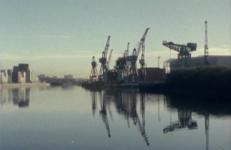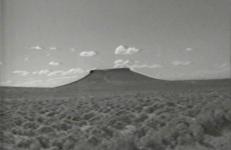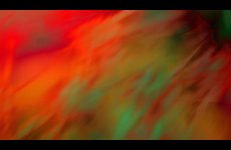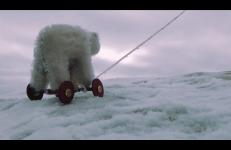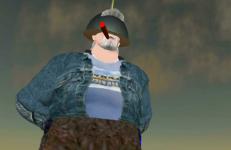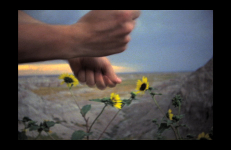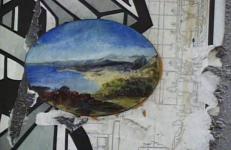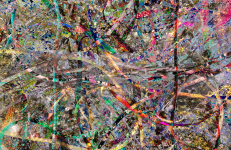Our Non-Understanding of Everything is a series of 16 videos that explore how the structures of architecture, semiconductors, and circuits become forms of expression reflecting hierarchies, cognitive processes, and relationships to the natural environment.
Environment
Our Non-Understanding of Everything is a series of 16 videos that explore how the structures of architecture, semiconductors, and circuits become forms of expression reflecting hierarchies, cognitive processes, and relationships to the natural environment.
Our Non-Understanding of Everything is a series of 16 videos that explore how the structures of architecture, semiconductors, and circuits become forms of expression reflecting hierarchies, cognitive processes, and relationships to the natural environment.
Our Non-Understanding of Everything is a series of 16 videos that explore how the structures of architecture, semiconductors, and circuits become forms of expression reflecting hierarchies, cognitive processes, and relationships to the natural environment.
Our Non-Understanding of Everything is a series of 16 videos that explore how the structures of architecture, semiconductors, and circuits become forms of expression reflecting hierarchies, cognitive processes, and relationships to the natural environment.
Outwardly from Earth's Center is a fictitious narrative about a society on an unstable piece of land that is in danger of disappearance. The situation requires the population's collective initiative in order to secure individual survival and to allow the society to remain. The concept's background is somewhat realistic since Sandön moves approximately one meter per year.
Through a successful eBay bid in January of 2004, 1975 eteam dollars turned into 10 acres of personal U.S. property. The lot, a generic square within the larger American grid of townships, is located in the desert of Nevada. The closest settlement, Montello, "The town that refuses to die", is eight miles away, and the almost abandoned airbase Wendover, at the edge of the Salt Flats, is located about 30 miles SE. It's the 10-acre lot and its surroundings that started the eteam's search for solutions to problems, which were created by big systems that had made some small mistakes.
The four‐part cycle Parallel deals with the image genre of computer animation. The series focuses on the construction, visual landscape and inherent rules of computer-animated worlds.
“Computer animations are currently becoming a general model, surpassing film. In films, there is the wind that blows and the wind that is produced by a wind machine. Computer images do not have two kinds of wind.”
-- Harun Farocki
The four‐part cycle Parallel deals with the image genre of computer animation. The series focuses on the construction, visual landscape and inherent rules of computer-animated worlds.
"Computer animations are currently becoming a general model, surpassing film. In films, there is the wind that blows and the wind that is produced by a wind machine. Computer images do not have two kinds of wind."
— Harun Farocki
The four‐part cycle Parallel deals with the image genre of computer animation. The series focuses on the construction, visual landscape and inherent rules of computer-animated worlds.
"Computer animations are currently becoming a general model, surpassing film. In films, there is the wind that blows and the wind that is produced by a wind machine. Computer images do not have two kinds of wind."
—Harun Farocki
Vice President Mike Pence eagerly plays cheerleader in chief for Donald Trump. In accepting the vice-presidential nomination in 2016, Pence proclaimed, “I'm a Christian, a conservative, and a Republican — in that order,” suggesting how we might understand his role. This ground-breaking, earth-shaking video begins with a pomp-ridden televised press conference, accompanied by uplifting music. Held early in 2017 at the White House Rose Garden, it showcased the president’s announced withdrawal from the historic Paris Climate Accord.
Petrolia takes its name from a redundant oil-drilling platform set in the Cromarty Firth, Scotland. The film looks at the architecture of the oil industry along the Scottish coastline where oil and gas supplies are predicted to run dry in the next forty years.
Petrolia takes its name from the redundant oil drilling platform situated in the Cromarty Firth, Scotland. The film looks at the architecture of the oil industry along the Scottish coastline where oil and gas supplies are predicted to run dry in the next forty years.
Produced in 1974, and restaged in 2002, near Pilot Butte in southwestern Wyoming.
The artist makes a pilot light using ice, which he has fashioned into a magnifying lens to start a small fire.
This piece was originally shot using 1/2" open reel video and later incorporates edits from DV video.
Pitayas are the sacred Mesoamerican fruits that grow on Mexican nopales, an ancient plant. This is the colorful body, the vibrant blood and the radiant skin of the open life.
In imaginary landscapes where trees talk and frogs turn to handsome princes, Pizzly Bear is a story of a cross between a Grizzly and Polar Bear. Like in so many fables, the story is based in fact and this small animal is an archetypal stand-in for humanity.
Created and commissioned for Little Sun, Fast Forward short film series exploring a sustainable world. For this project over 100 interviews were conducted in five destinations throughout Ethiopia; teachers, brokers, farmers, students, engineers, carpenters, soldiers, merchants, taxi drivers, cashiers, security guards, housewives, managers, nurses, designers, cameramen, accountants, pharmacists, architects, mechanics, technicians, retirees, and more.
Structured on the central metaphor of Shakespeare's The Tempest, this work alludes to the position of the individual in (post) modern culture, and the tension between natural and technological power. Orchestrating these forces in a foreboding premonition of upheaval, Hall tempers his role as an omniscient Prospero with the passive condition of the contemporary individual. Natural and urban landscapes are juxtaposed with close-ups of his face, howling as if in pain.
If second lives have grown into the landscape of social network space and avatars engage a full range of human emotions and experience, it follows that they would eventually encounter existential questions. A plot of land is purchased in the online network of SecondLife and a simple questions is asked: Where do discarded 3D objects go and can we build a dumpster to accommodate them? To find out eteam set aside a year to let this virtual land use problem unfold and what is captured in Prim Limit is the lived experience of avatars managing and recording this dumpster.
I reconcile the violent act. Project Gasbuggy pertains to the site where the first of three nuclear bombs were dropped a mile into the earth as part of a government collaboration with natural gas companies to see if nuclear energy could be used to free up natural gas in the earth. As a result of the radiation from each explosion, the land was labeled a dead zone where no harvesting or development of any kind is allowed.
Public Discourse is an in-depth study of illegal installation art. The primary focus is on the painting of street signs, advertising manipulation, metal welding, postering and guerrilla art, all performed illegally. Public Discourse is about passionate artists who want their work to be seen by a wide range of people rather than be confined to the systemic structures of galleries and museums.
Public Discourse is an in-depth study of illegal installation art. The primary focus is on the painting of street signs, advertising manipulation, metal welding, postering and guerrilla art, all performed illegally. Public Discourse is about passionate artists who want their work to be seen by a wide range of people rather than be confined to the systemic structures of galleries and museums.
Public Discourse is an in-depth study of illegal installation art. The primary focus is on the painting of street signs, advertising manipulation, metal welding, postering and guerrilla art, all performed illegally. Public Discourse is about passionate artists who want their work to be seen by a wide range of people rather than be confined to the systemic structures of galleries and museums.
This is the hauntological image of the sacred Mesoamerican snake. The contemporary flickering of his shamanic presence. Part of the Hauntology series.
A daily chronicle of the Ashaninka community during the rainy season, recorded on video during a workshop in a village on the Amônia River in the state of Acre. The involvement of the filmmakers with the Ashaninka community makes the film go beyond a mere description of activities, reflecting the rhythm of the village and the humor of its inhabitants.
Direction and photography by Valdete, Isaac, and Tsirotsi Ashaninka, Llullu Manchineri, Maru Kaxinawá, Nelson Kulina, Fernando Katuquina, and André Kanamari; edited by Mari Corrêa.
In Ashaninka with English subtitles.




